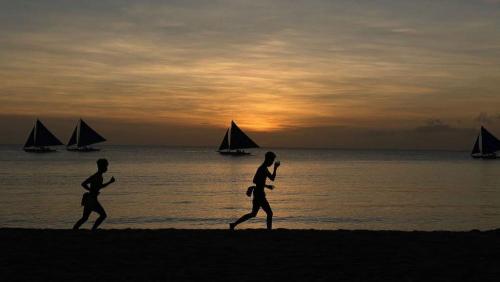
https://www.adb.org/news/features/these-actions-coastal-and-marine-touri...
In 2019, travel and tourism contributed more than 10% of the world’s GDP and employed some 333 million people—one in every eleven jobs. About 80% of all tourism is concentrated in coastal areas, beach holidays and activities like diving, sports fishing, and cruising make up a significant part of the blue economy worldwide. Here in Asia and the Pacific, they are major sources of employment in most Small Island Development States, two-thirds of which rely on tourism for more than 20% of their GDP.
But the millions of livelihoods—and the ecosystem that coastal and marine tourism relies on—is under threat from over-extraction, consumer behavior, and two priority issues: climate change and environmental degradation.
So how can the resilience of coastal and marine tourism (CMT) be strengthened? Biodiversity protection, nature-based solutions to climate adaptation, blue investments, and greener and more sustainable (coastal and marine) tourism practices can offer cost-effective and longer-lasting solutions for building more resilient ecosystems, communities, and economic activities. At the same time, they can provide additional sources of revenue and employment. Strengthening the resilience of CMT requires intervention across three areas:
Policy, planning, and financing
The CMT sector requires appropriate policies and regulations to ensure resilience and sustainability. Destinations with a high dependency on CMT should have separate policies that address the challenges of the sector. Appropriate policy includes the following elements: support for a protected area network of marine and coastal parks and reserves, including beach parks and regulations, such as a blanket ban on the sale/use of plastics, closure of sites and areas during breeding season, or even a cap on the number of visitors to popular attractions. As well, the right authority should have the empowerment—and the budget—to ensure a clear mandate in sustainable and resilient tourism. Such an authority should have qualified staff and the availability of relevant data to make decisions that take a long-term perspective on the changes in climate and disaster risks.
Infrastructure/nature-based solutions
Tourism requires the right physical infrastructure to ensure resilience. This infrastructure needs to be of sufficient capacity—such as waste-water systems in coastal towns or parking spaces at the beach—as well as reflecting climate mitigating measures, such as building codes and standards to address adverse weather impact, like storms, and flooding. Physical infrastructure also needs to apply nature-based solutions, which include measures like mangrove protection and rehabilitation, which not only boosts nature tourism, but also protects coasts from floods and acts as a tool for the industry toward climate resilience.
Operational practices and diversification
Consumers and tourists are much more environmentally conscious now, and the tourism industry has started to adapt. The challenge is to get all enterprises to operate in a sustainable, inclusive, and nature-positive way. Larger operators are taking the lead in ensuring their value/supply chains are aligned with their own targets. A scale-up of these efforts will go a long way in improving resilience.
Diversification across markets was proven to have increased resilience during the COVID-19 pandemic when domestic markets became dominant, and governments may use the crisis as an opportunity to diversify their economies to absorb future shocks. Resilience is further found in the ability of marine and coastal resources to produce livelihood value beyond tourism. For example, marine protected areas improve fish stock that can sustain a protein-rich staple to coastal communities during a time of economic downturn in the absence of tourists.
ADB support to resilient marine and coastal tourism development
The Asian Development Bank (ADB) sees coastal and marine life as a critical development issue. ADB has launched an ‘Action Plan for Healthy Oceans and Sustainable Blue Economies’ for Asia and the Pacific alongside an ADB Oceans Financing Initiative. The plan and initiative aim to support the protection and restoration of marine ecosystems, while promoting inclusive livelihoods, in line with SDG 14 (life below water). ADB has committed more than $5.3 billion to tourism-related interventions since 2010. ADB's financing (lending) and advisory support has shifted recently toward integrated sustainable tourism interventions and resiliency as part of post COVID-19 recovery efforts.
That includes the Southeast Asia Sustainable Tourism Facility, which will provide project identification and preparation support, capacity development, and knowledge services; the Plastik Sulit Project, which is focusing on plastic management and the circular economy; and the SME Blue Impact Asia facility which, together with the UNDP and UNEP, will accelerate small- and medium-ocean enterprises in the CMT.
A resilient CMT sector requires active, coordinated interventions at the operational level of tourism supported by appropriate policy and regulation and informed by real-time data and empowered authority. This is not just good for a stable, resilient climate but also for the livelihoods and wellbeing of people in Asia and the Pacific.










Add new comment